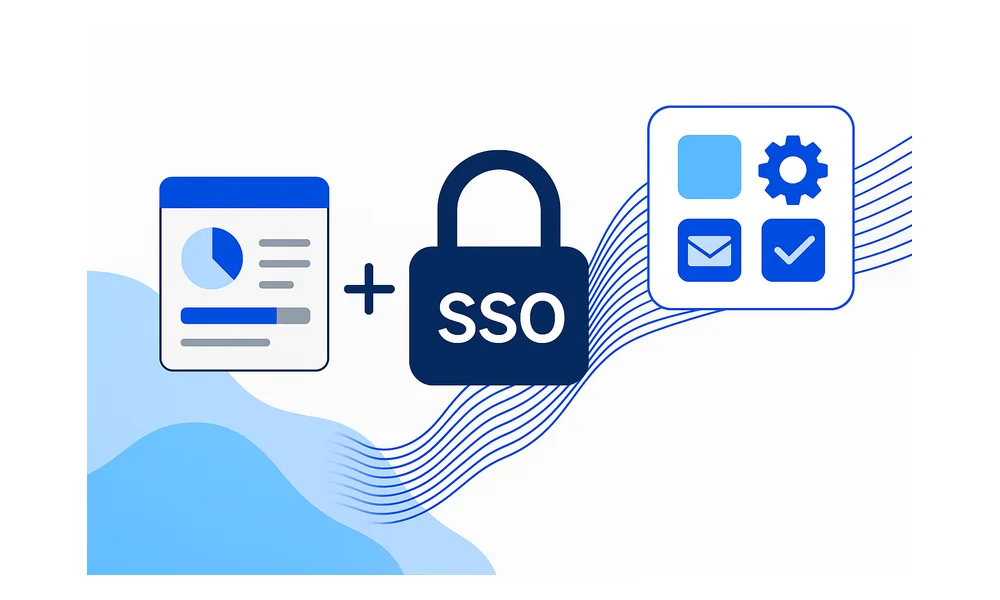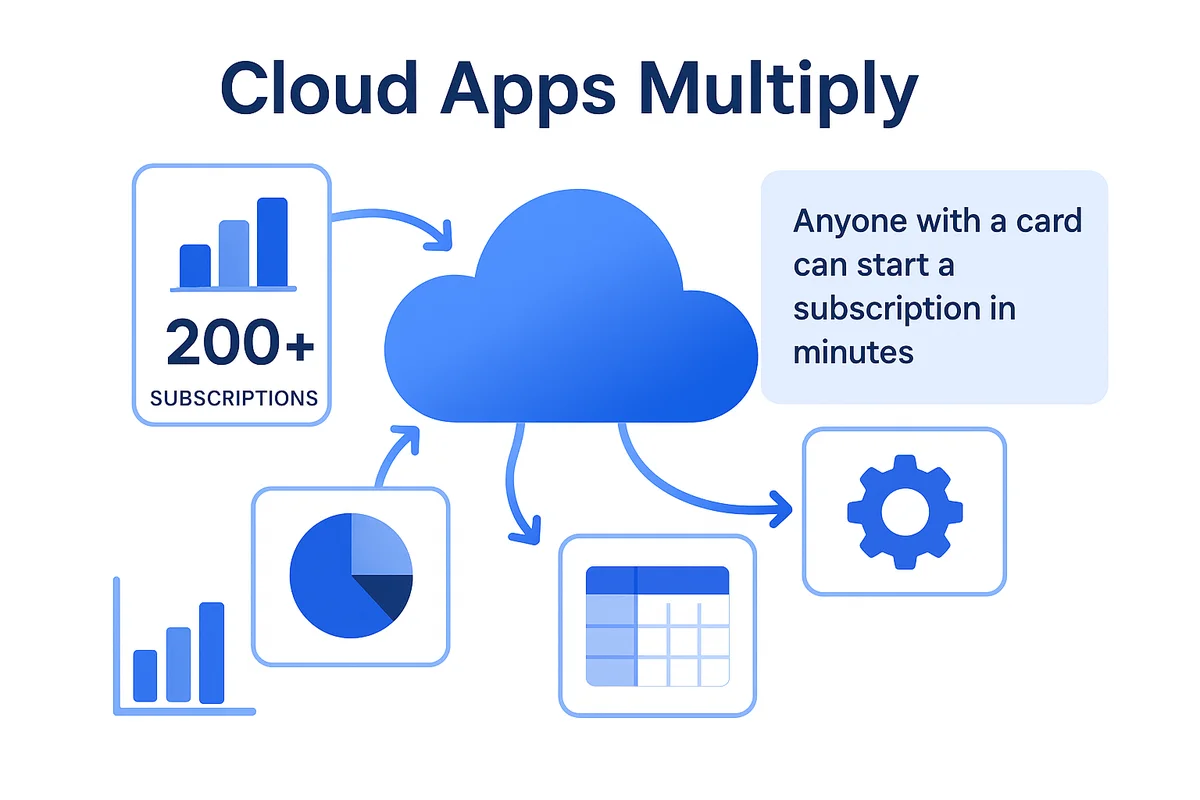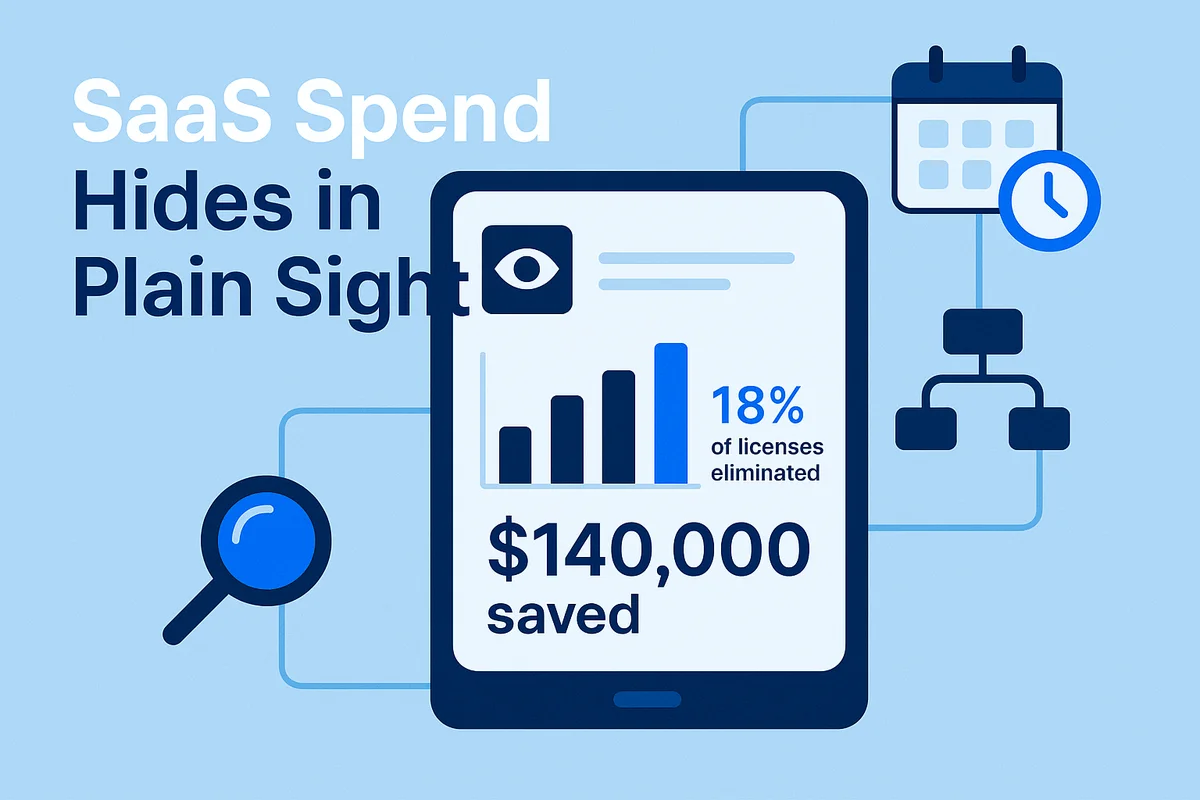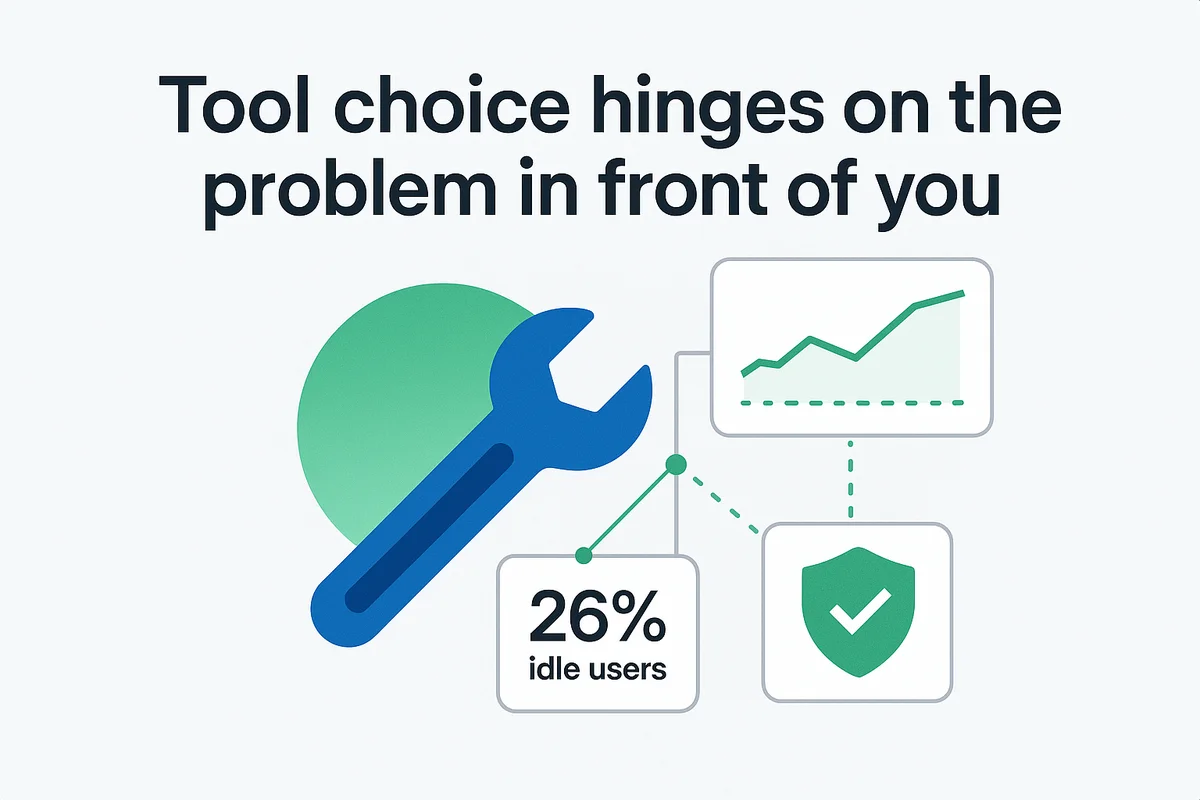The Difference Between a SaaS Management Platform and SSO

Finance, HR, sales, and even small project teams grab the company card and spin up cloud apps in minutes. All IT sees are the invoices that appear later. Shadow IT, duplicate subscriptions, and unused licenses chip away at the budget and open audit gaps month after month.
SaaS management tools comb through spend data, browser footprints, and API logs to list every app and tie each seat to an actual user. Single sign-on corrals logins in one place, enforces MFA, and keeps session records for the security team. On their own, though, each tool only solves part of the problem.
Connect the two and the company gets instant discovery, tighter cost control, and cleaner access governance in a single feedback loop that trims spend and risk quickly.
Table of Contents
- How SMPs Uncover Waste and Automate Control
- SSO Locks the Front Door Securely
- Choosing the Right Tool or Both Together
- Conclusion
- Audit your company's SaaS usage today
SaaS Sprawl Exposes Hidden Governance Gaps
Cloud apps multiply.
Most mid-market companies are already juggling more than 200 paid subscriptions, and that’s before you add personal trials and freemium sign-ups. Finance signs some, marketing grabs others with a credit card, and developers spin up the rest. IT sees only the slice that hits the directory or expense system. Everything outside that slice is shadow IT.
Why do these gaps stay hidden? Three things collide.
- Anyone with a card can start a subscription in minutes
- Apps swap data through native integrations the security team never reviews
- Renewal emails go to whoever bought the tool, not to finance
Manual asset sheets break the moment a user signs up with Google or Microsoft OAuth. Directory and mobile device tools help, yet they protect identity rather than inventory. The result is a false sense of control: passwords look clean while invoices tell another story.
Governance falls into layers, often sketched on a whiteboard.
- Access layer keeps outsiders from logging in
- Usage layer tracks who still needs the seat
- Spend layer ties licenses back to the purchase order
- Risk layer maps data flows and compliance tags
No single platform covers every layer because each one pulls from a different feed. Identity data powers access. Finance and expense systems inform spend. Browser plugins and CASB logs show usage. Security questionnaires and audit reports inform risk. Trying to stitch those feeds together by hand eats up hours and still misses the apps hiding behind personal email domains.
The exploding footprint is not slowing. Gartner says SaaS spend will reach 232 billion dollars next year, up 17 percent. Closing the gaps calls for tools built to scale, not another worksheet.

How SMPs Uncover Waste and Automate Control
SaaS spend hides in plain sight. Seats pile up. Renewal dates slip past calendars. An SMP cuts through that fog.
Discovery runs day and night. Card spend, CASB alerts, and browser add-ons all flow into one catalog. Finance sees every contract. Security spots every domain that touches the network. Marketing finds the five design tools no one approved. That single feed gives IT the visibility spreadsheets never manage.
The picture shifts when usage analytics join the mix. License rosters stack up against real logins and feature calls. At a mid-market software firm, Zylo showed 1,640 seats paid for, 1,346 active, 440 heavy, and the rest idle. Eighteen percent of licenses were cut before the renewal call, trimming $140,000 and shortening the GDPR processor list in one move.
Automation takes it from there.
- Renewal timers drop tickets into the service desk six months out
- Off-boarding flows pull Slack, Google Workspace, and niche apps with the same click
- Tiered license swaps downgrade casual users before month-end close
- Policy-breaching apps ping the security channel with live risk scores
Teams shift from finding to fixing to preventing without hopping tabs. Finance exports a clean amortization schedule. Security grabs a processor report for ISO 27001. Compliance audits move faster because the evidence is already packaged.
None of these gains require SSO. An SMP reads expense feeds and API calls whether an app sits behind Okta or a saved password in Chrome. That neutrality matters when only 60 to 70 percent of apps accept SAML. The rest still drain funds and add risk. By covering both groups, the SMP turns scattered data into one ledger of truth.
Gartner puts unused SaaS spend at up to 30 percent. An SMP keeps that number off the balance sheet.

SSO Locks the Front Door Securely
Single sign on cuts password sprawl and puts every login under the same spotlight. Because each app inherits one policy, risk drops before security even runs a report.
Phishing thrives on weak or reused passwords. When everyone signs in through a hub such as Okta or Microsoft Entra ID, each password comes with MFA by default. A stolen credential without that second factor can’t open the door, and the try lands in the admin dashboard seconds later. Verizon’s 2023 report tied credentials to 74 percent of breaches. Reduce the number of passwords and that figure falls quickly.
Visibility improves next. Session logs sort by user, app, time, and IP, making pattern changes obvious. Automatic blocks and alerts stop suspicious logins before damage occurs.
Dynamic policies add another guardrail. Geo fencing stops traffic from unapproved regions. Device checks verify disk encryption or patch level before handing over tokens. Staff barely notice, yet the attack surface shrinks.
SSO does one job well. It watches the door. Once users reach Salesforce or Jira, it can’t see how many seats sit idle or whether a team launched a duplicate workspace. Finance and IT still need a SaaS management platform for that view.
Key wins delivered by SSO:
- Fewer passwords and automatic MFA on every app
- Central log for user sessions, feeds SIEM without extra agents
- Real-time blocks on suspicious behavior, fed by IP, device, and network signals
- Simple off-boarding; kill the IdP account and every linked app locks out
Teams looking for lower risk and cleaner audits start here, then layer an SMP to keep spending and seat creep just as tidy.

Choosing the Right Tool or Both Together
Tool choice hinges on the problem in front of you.
A fresh acquisition drops 200 new employees on IT’s lap. A license audit sits two weeks away. A login alert points to Russia even though every worker sits in Texas. Each moment calls for a different lever.
An SMP shines when money, contracts, or audits set the clock. Finance sends the Salesforce renewal pack and asks for proof of need. The SMP already mapped every seat to last-month usage and shows 26 percent of sellers idle. Cutting those seats before signatures brings quick savings and keeps procurement happy. The same dashboard exports a GDPR report in seconds, no swivel-chair searching.
An SSO steps forward when speed and safety matter. A nurse clicks a link that steals her password. Because every cloud app routes through Okta, the unusual IP triggers step-up MFA and blocks the session. No harm, no ticket backlog, no breach notice.
Together, the tools close loops neither can finish alone. An SMP spots a design tool dormant for 45 days. A webhook tells Okta to pull the user group, which kills access and frees five paid seats. The SMP logs the action for finance, and the SSO logs it for security. One signal, two problems solved.
Use the quick list below when deciding what to grab first:
- If you need hard numbers for renewals, audits, or chargebacks, open the SMP.
- When fighting phishing, lost devices, or risky logins, tighten the SSO rules.
- For rolling out or removing large groups after a merger or layoff, pair both so accounts spin up and wind down in one sweep.
- To track down hidden apps that still hold customer data, let the SMP find them, then let the SSO lock them.
Gartner puts wasted SaaS spend at 30 percent. Verizon’s breach report shows four of five intrusions start with a password. Relying on one tool leaves half the picture blank. Point both at the same events and the gaps start to disappear.

Conclusion
SaaS sprawl hits both budgets and security. IT teams can’t see everything when subscriptions hide in spreadsheets or spring from unofficial sign-ups. The article explained how a SaaS management platform surfaces every app, ties spending to actual usage, and trims licenses automatically. With single sign-on, access moves behind one secure entry point, every login is recorded, and phishing attempts have fewer doors to try.
Using an SMP alongside SSO reduces waste, improves control, and closes the remaining gaps in governance.

Audit your company’s SaaS usage today
If you’re interested in learning more about SaaS Management, let us know. Torii’s SaaS Management Platform can help you:
- Find hidden apps: Use AI to scan your entire company for unauthorized apps. Happens in real-time and is constantly running in the background.
- Cut costs: Save money by removing unused licenses and duplicate tools.
- Implement IT automation: Automate your IT tasks to save time and reduce errors - like offboarding and onboarding automation.
- Get contract renewal alerts: Ensure you don’t miss important contract renewals.
Torii is the industry’s first all-in-one SaaS Management Platform, providing a single source of truth across Finance, IT, and Security.
You can learn more about Torii here.
Frequently Asked Questions
SaaS management tools analyze spend data, browser footprints, and API logs to identify applications and associate each license with actual users, improving visibility and control over cloud app expenditures.
Shadow IT can lead to hidden costs, duplicate subscriptions, and potential security risks, as it comprises unauthorized applications used without IT's oversight.
Automation in SaaS management streamlines processes such as contract renewals, offboarding, and license adjustments, reducing manual errors and saving time for IT teams.
SSO centralizes login credentials, enhances security through multifactor authentication, and minimizes the risks associated with password sprawl and potential breaches.
Visibility is crucial in SaaS management as it provides insights into software usage, costs, and security, enabling informed decisions that optimize software spend and compliance.
Organizations can uncover wasted SaaS spend by using SaaS management platforms to analyze user activity, identify inactive licenses, and detect unused or redundant applications.
Utilizing both an SMP and SSO enhances security and visibility, effectively managing software expenditures while securing access to applications and reducing the risk of data breaches.

